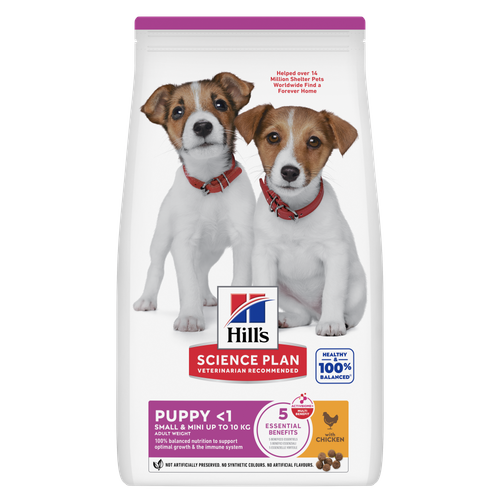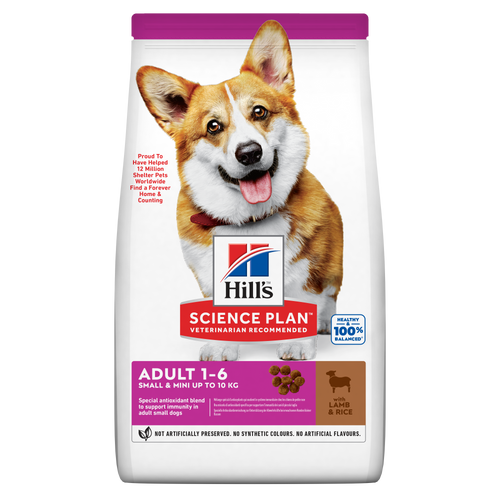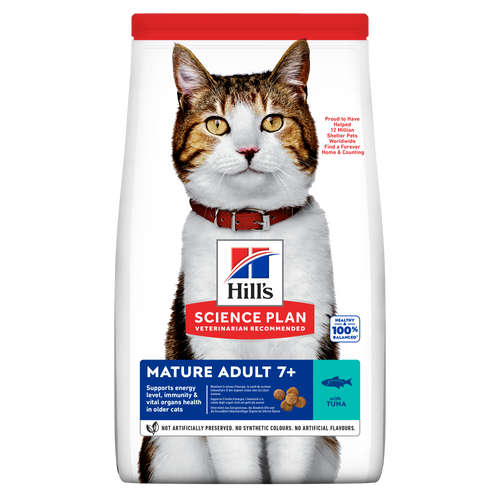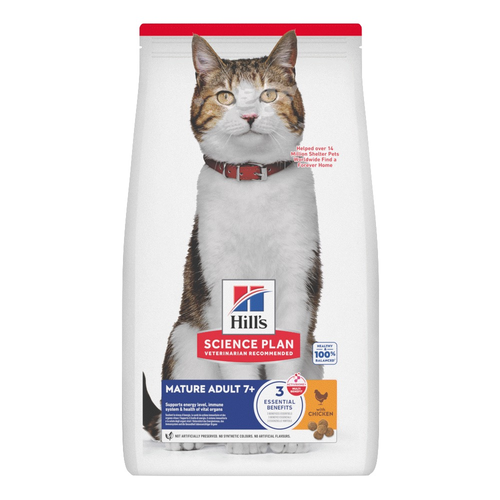
-
Featured products
 Small & Mini Mature Adult Dog Food
Small & Mini Mature Adult Dog FoodHill's Science Plan Small & Mini Breed Mature Adult Dog Food with Chicken is a complete pet food, specially formulated with ActivBiome+ Multi-Benefit Technology.
Tailored nutrition to support graceful ageing in small dogs. Specially made with a synergistic blend of nutrients for energy & vigor.Shop Now Small & Mini Puppy Food
Small & Mini Puppy FoodHill's Science Plan Puppy Small & Mini Breed Dog Food with Chicken is a complete pet food, specially formulated with ActivBiome+ Multi-Benefit Technology.
100% balanced nutrition to support optimal growth & the immune system.Shop Now Small & Mini Adult Dog Food
Small & Mini Adult Dog FoodHill's Science Plan Small & Mini Breed Adult Dog Food with Lamb & Rice is a complete pet food, specially formulated with ActivBiome+ Multi-Benefit Technology.
Tailored nutrition for the unique needs of small dogs during the prime of their life.Shop NowFeatured products Mature Adult 7+ Cat Food
Mature Adult 7+ Cat FoodHill's Science Plan Mature Adult Cat Food with Salmon is a complete pet food, specially formulated with ActivBiome+ Multi-Benefit Technology.
This food supports graceful aging in cats, providing a synergistic ingredient blend to help support energy & activity levels.Shop Now Mature Adult Cat Food
Mature Adult Cat FoodHill's Science Plan Mature Adult Cat Food with Chicken is a complete pet food, specially formulated with ActivBiome+ Multi-Benefit Technology.
This food supports graceful aging in cats, providing a synergistic ingredient blend to help support energy & activity levels.Shop Now Oral Care Adult Cat Food
Oral Care Adult Cat FoodHill's Science Plan Oral Care Adult Cat Food with Chicken contains clinically proven kibble technology to reduce plaque & tartar build up.
Shop Now -
Dog
- Dog Tips & Articles
-
Health Category
- Weight
- Food & Environmental Sensitivities
- Urinary
- Digestive
- Joint
- Kidney
-
Life Stage
- Adult Nutrition
Cat- Cat Tips & Articles
-
Health Category
- Weight
- Skin & Food Sensitivities
- Urinary
- Digestive
- Kidney
-
Life Stage
- Kitten Nutrition
- Adult Nutrition
Featured articles Proteins
ProteinsTo make a protein, amino acids are linked together in a long chain. The chain is then bundled into to a three-dimensional structure, like a tangled ball of yarn.
Read More The Right Diet For Your Pet
The Right Diet For Your PetIn people, the right diet is very important. If you are eating the wrong way for your metabolism, activity level, age and lifestyle you could end up with health issues.
Read More The Incredible Science Behind Your Pet's Microbiome
The Incredible Science Behind Your Pet's MicrobiomeLearn what your pet's microbiome is, how it contributes to your pet's gut and overall health, and why nutrition is important in maintaining healthy microbiomes.
Read More -


Everyone dreams of having a well-behaved, happy, and sociable puppy — but achieving this takes time, patience, and the right approach to training. Starting early is key! In fact, training may have already begun before you bring your new furry friend home, with some basic obedience and toilet training. But now, the responsibility is yours.
Your puppy learns quickly, so it’s important to set expectations from day one. They won’t know how to behave unless you teach them, so consistent and positive reinforcement is essential.

Why Early Puppy Training is Crucial
Early training lays the foundation for your puppy’s future behavior and strengthens your bond. There are countless books and puppy-training courses available, and your vet can offer guidance or even run training classes. No matter which method you choose, there are a few golden rules to follow.


Tasty Tips
Positive Reinforcement: Good Boy/Girl!
Dogs learn by association. If your puppy does something good, reward them immediately — within a second or two — to reinforce the action.
Rewards can include:
Treats: A small, tasty snack works wonders.
Praise: Verbal encouragement like "Good boy/girl! in a cheerful tone.
Playtime: A quick game can also serve as a great reward.
Keep each training session short — about two minutes — and aim for five or six sessions throughout the day. Practice in different environments (inside, outside, and on walks) to help your puppy generalize commands, but start in distraction-free areas for the best results.
Teaching Boundaries: Not So Good Boy/Girl
Puppies need to learn what they can and can’t do. For example, chewing is a natural exploratory behavior, but your puppy won’t automatically know what’s off-limits.
The key is to redirect and ignore unwanted behaviors without anger or punishment:
Ignore: Don’t shout, smack, or glare. Simply withdraw attention.
Redirect: If the behavior is dangerous (like chewing an electric cord), interrupt with a firm "No," capture their attention, and reward them when they stop.
The Power of the Word "No"
If there’s one command your puppy must learn, it’s "No." Use it for potentially dangerous or destructive behaviors:
Firm and Calm: No need to shout — a low, assertive tone works best.
Immediate Reward: Once the behavior stops, reward with praise or a treat to reinforce the positive response.
Stay Consistent and Patient
Puppies thrive on consistency, so make sure all family members follow the same training rules and commands. Training takes time, but with positive reinforcement and clear boundaries, your puppy will grow into a well-behaved and happy companion.


One of our staff authors prepared this article for you
Related products

Hill's Science Plan Light Adult Small & Mini Breed Dog Food with Chicken is a complete pet food, specially formulated with ActivBiome+ Multi-Benefit Technology.
Helps keep your dog fit and active with our low calorie, great-tasting food.
Precise nutrition for less active adult small dogs that require a low calorie food to help maintain a healthy weight & lifestyle.

Hill's Science Plan Small & Mini Breed Mature Adult Dog Food with Chicken is a complete pet food, specially formulated with ActivBiome+ Multi-Benefit Technology.
Tailored nutrition to support graceful ageing in small dogs. Specially made with a synergistic blend of nutrients for energy & vigor.

Hill's Science Plan Small & Mini Breed Adult Dog Food with Lamb & Rice is a complete pet food, specially formulated with ActivBiome+ Multi-Benefit Technology.
Tailored nutrition for the unique needs of small dogs during the prime of their life.

Hill's Science Plan Puppy Small & Mini Breed Dog Food with Chicken is a complete pet food, specially formulated with ActivBiome+ Multi-Benefit Technology.
100% balanced nutrition to support optimal growth & the immune system.
Related articles

Learn what you can feed your pregnant or nursing dog to keep her and her new pups healthy.

Learn more about the problem of dog obesity and more importantly, what you can do to help your dog avoid becoming overweight.

Learn the the dangers of feeding your dog chocolate, which types are most dangerous, and what to do if you discover that they have consumed chocolate.

Learn about the symptoms, causes and treatments of dry puppy skin and how to provide relief for your dog. For expert skin care advice, visit Hill's Pet MT.

Put your dog on a diet without them knowing
Our low calorie formula helps you control your dog's weight. It's packed with high-quality protein for building lean muscles, and made with purposeful ingredients for a flavorful, nutritious meal. Clinically proven antioxidants, Vitamin C+E, help promote a healthy immune system.
Put your dog on a diet without them knowing
Our low calorie formula helps you control your dog's weight. It's packed with high-quality protein for building lean muscles, and made with purposeful ingredients for a flavorful, nutritious meal. Clinically proven antioxidants, Vitamin C+E, help promote a healthy immune system.

